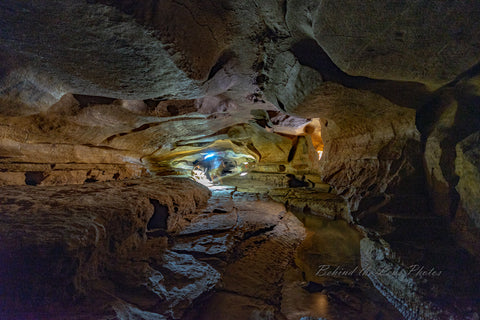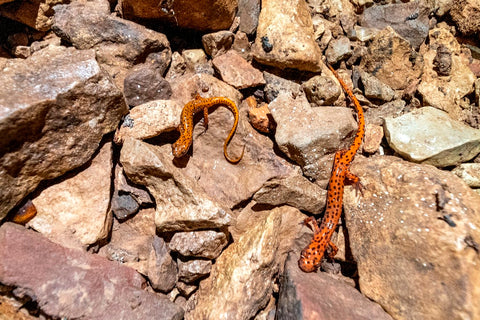Can you imagine what it would be like living deep inside a cave … in complete darkness? Well, unless you're a spelunker (someone who explores caves), most of us who have visited a cave, have only seen the entrance, or front portion of the cave, possibly by attending an event such as a wedding, or perhaps on vacation, while visiting as a tourist. Conversely, if we could step through one of the chamber openings, we'd begin entering a whole new living world … one that exists in complete darkness.
The Ecosystem
Bluegrass Cavern is home to many troglobites (cave dwelling animal species) and troglophiles (animals that live their entire lives in caves). Both, typically have evolutionary adaptations to cave life such as loss of pigmentation or eyesight, and unfortunately many cave-dwellers are listed as endangered due to the fragile nature of cave ecosystems. Given the diversity of animals that call Bluegrass Cavern home, we are committed to preserving their unique habitat through chemical-free farming, so that we can help conserve the fragile cave ecosystem.
 Photo: Christopher Morris
Photo: Christopher Morris
Cave Life Adaptations
Some of the species found in Bluegrass cavern include two different genera of cave crickets (Hadenoecus subterraneus) and (Ceuthophilus stygius). These crickets have strong powerful hind legs that will allow for a fast getaway if threatened. The cave or spotted-tail salamander (Eurycea lucifuga) is a species of brook salamander that has a very long spotted prehensile tail. The cave crayfish (Orconectes pellucidus) as well as the cave shrimp (Palaemonias ganteri) likely reside in and depend upon the freshwater streams that flow through the long and winding passageways of the mile-long cave system. The cave shrimp is eyeless and nearly transparent given its habitat being exclusively in the streams of caves.
 Photo: Chuck Sutherland
Photo: Chuck Sutherland
Preserving the Habitat
Bats have been spotted in the cave, and the species could include Tricolored bats (Perimyotis sublavus), Indiana bats (Myotis sodalist), and the endangered Gray bats (Myotis grisescens). Protection of these endangered species is paramount as their populations have been decimated by the fungal disease white-nose syndrome. By limiting human activity deeper in the cave, which disrupts mating and roosting of the bats, as well focusing on our organic farming methods, we hope to provide a safe habitat to any and all animals that live in Bluegrass Cavern.
 Photo: Christopher Morris
Photo: Christopher Morris
About the Author

Jamie Dempsey Barber, Ph.D.
Bluegrass Cavern and organic farm are family-owned. Each member of the large family (Dr. Dempsey has eight children) does his/her part. The family is very committed to the causes Bluegrass Cavern LLC supports. Jamie, a cancer biologist with a doctorate in cell biology, is our resident blogger and researcher. She is very passionate about all things biology, especially the wonders of life on the cellular and molecular scale.
